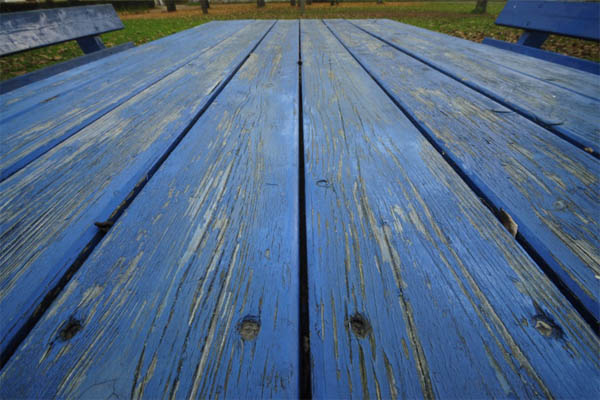How to Use Wood Filler for Large Gaps
Woodworking, a captivating craft, entails shaping raw materials into exquisite creations.
Yet, even seasoned artisans confront challenges, including addressing large gaps and holes in wood.
Fortunately, there’s a solution – wood filler for large holes and gaps.
This comprehensive guide will take you through the precise steps of applying the best wood filler to fill those substantial voids, preserving the flawless finish of your interior wood projects.
Learn how to mix sawdust and wood glue, apply wood filler, and transform a piece of wood by using wood filler to fill large gaps and nail holes with precision.
Mastering the Art of Using Wood Filler for Large Gaps (large holes)
1. Prep the Surface
Before delving into the world of wood filler, it’s crucial to prepare properly. Start by meticulously cleaning the area around the gap in the wood trim.
Eliminate any debris, loose wood particles, or contaminants that could interfere with the filler’s adhesion and affect the appearance of the wood grain.
Ensuring a pristine surface sets the stage for the filler, whether you’re using wood glue and sawdust to address gaps or filling a screw hole, to perform its task effectively.
2. Choose the Right Wood Filler
Choosing the right wood filler is crucial when you need to fill holes, whether they’re large or small.
For substantial gaps, consider using a specialized wood filler like Toupret Extrem Wood Filler, known for its effectiveness in repairing various gaps, cracks, and holes in both interior and exterior wood.
This versatile filler ensures your repairs are not only long-lasting but also aesthetically pleasing, making it a reliable choice for all your wood repair needs.
3. Apply the Wood Filler
Armed with the appropriate wood filler for small holes, it’s time to dive into your repair project.
Utilize a putty knife or a similar tool to expertly use to fill the small holes with the wood filler.
Make sure to completely fill the holes, and don’t be afraid to apply a bit extra to account for potential shrinkage during the drying process.
Skillfully smooth the filler evenly across the gap to achieve a flawless finish.
4. Allow the Filler to Dry
In the realm of woodworking, patience is a virtue, and this principle extends to using wood filler.
When working with wood putty, epoxy wood filler, or addressing the need to fill large holes, it’s essential to consult the manufacturer’s instructions for the specified drying time, as it may vary depending on the product and environmental factors.
Typically, wood fillers necessitate several hours to dry thoroughly.
Granting the filler adequate time for drying forms a sturdy foundation for the subsequent stages of your project.
5. Sand the Filler Down
After allowing the wood filler, whether it’s plastic wood, epoxy filler, or any other type, to dry completely, the next phase is refining the surface.
Take a sheet of sandpaper and, using a circular motion, begin to smooth down the filler.
Gradually work your way around the area until the filler is flush with the surrounding wood.
This step demands a delicate touch, so invest your time and attention to ensure a flawless integration between the filler and the wood, effectively filling holes and gaps with precision.
6. Apply Finish
If your project demands a flawless finish, consider applying paint or stain to match the surrounding wood.
This step adds that final layer of finesse, ensuring that your repair work seamlessly integrates into the overall aesthetic of the piece.
Homemade Fillers: A Viable Alternative
Alternatively, you can explore the realm of homemade wood fillers for large gaps.
A popular concoction involves mixing Elmer’s glue with sawdust sourced from the same type of wood being filled.
This ingenious mixture not only blends perfectly with the wood’s color and texture but is also suitable for gaps up to ⅜ inch in size.
Crafters often appreciate this DIY approach for its simplicity and cost-effectiveness.
A Word of Wisdom: Follow Manufacturer’s Instructions
As you begin your journey with wood filler, it’s essential to adhere to the manufacturer’s instructions for the specific type of wood filler you’ve chosen.
Different products may require unique application techniques, varying drying times, and specific wood finish procedures.
Following these guidelines diligently guarantees that your efforts result in the best possible outcome, especially when addressing gaps in trim or enhancing wood durability with a wood hardener.
Conclusion
Conquering large gaps in wood is a feat achievable by anyone armed with the right knowledge and tools.
By adhering to a systematic process – from preparing the surface to selecting the right filler, applying it meticulously, allowing proper drying time, and perfecting the finishing touches – you can seamlessly mend even the most substantial gaps in your woodworking projects.
Whether you opt for specialized wood fillers like Toupret Extrem Wood Filler or explore the realm of homemade concoctions, your woodworking endeavors are poised to flourish.
Remember, each gap filled is a step closer to mastering your craft and creating remarkable pieces of art.

Don Kerr spent many years honing his skills as a DIY woodworker. He finds immense joy in not only creating remarkable pieces but also in generously sharing his knowledge. Connect with him via group.



